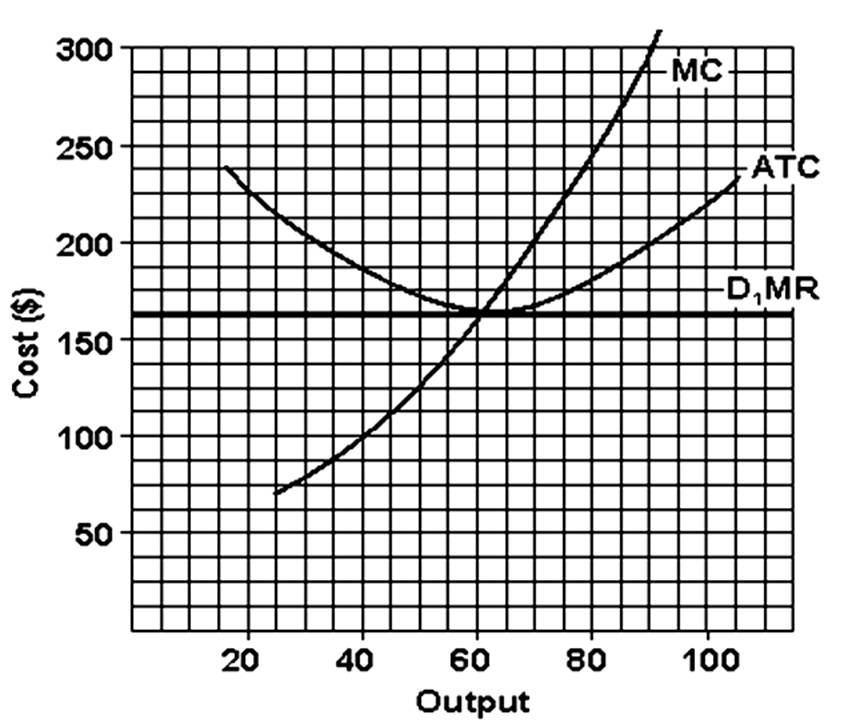(a) Find the total profit or total loss of the firm shown in the graph. (b) Is the firm in short run or long run? (c) How much is the firm's most efficient output? (d) What is the lowest price the firm would accept in the long run?

(a) zero (firm breaks even)
(b) long run; (c) 60; (d) $160
You might also like to view...
When there is an excess quantity of a product supplied, there will be
A) a tendency for price of the product to increase. B) a tendency for price of the product to fall. C) incentives for consumers to leave the market. D) upward pressure on the price of labor.
The factor(s) which cause(s) a movement along the demand curve include(s):
a. increase in level of advertising b. decrease in price of complementary goods c. increase in consumer disposable income d. decrease in price of the good demanded e. all of the above
Individual demand curves are summed horizontally to obtain the market demand curve
a. True b. False Indicate whether the statement is true or false
Which of the following correctly identifies a limitation of logarithmic transformation of variables?
A. Taking log of variables make OLS estimates more sensitive to extreme values in comparison to variables taken in level. B. Logarithmic transformations cannot be used if a variable takes on zero or negative values. C. Logarithmic transformations of variables are likely to lead to heteroskedasticity. D. Taking log of a variable often expands its range which can cause inefficient estimates.